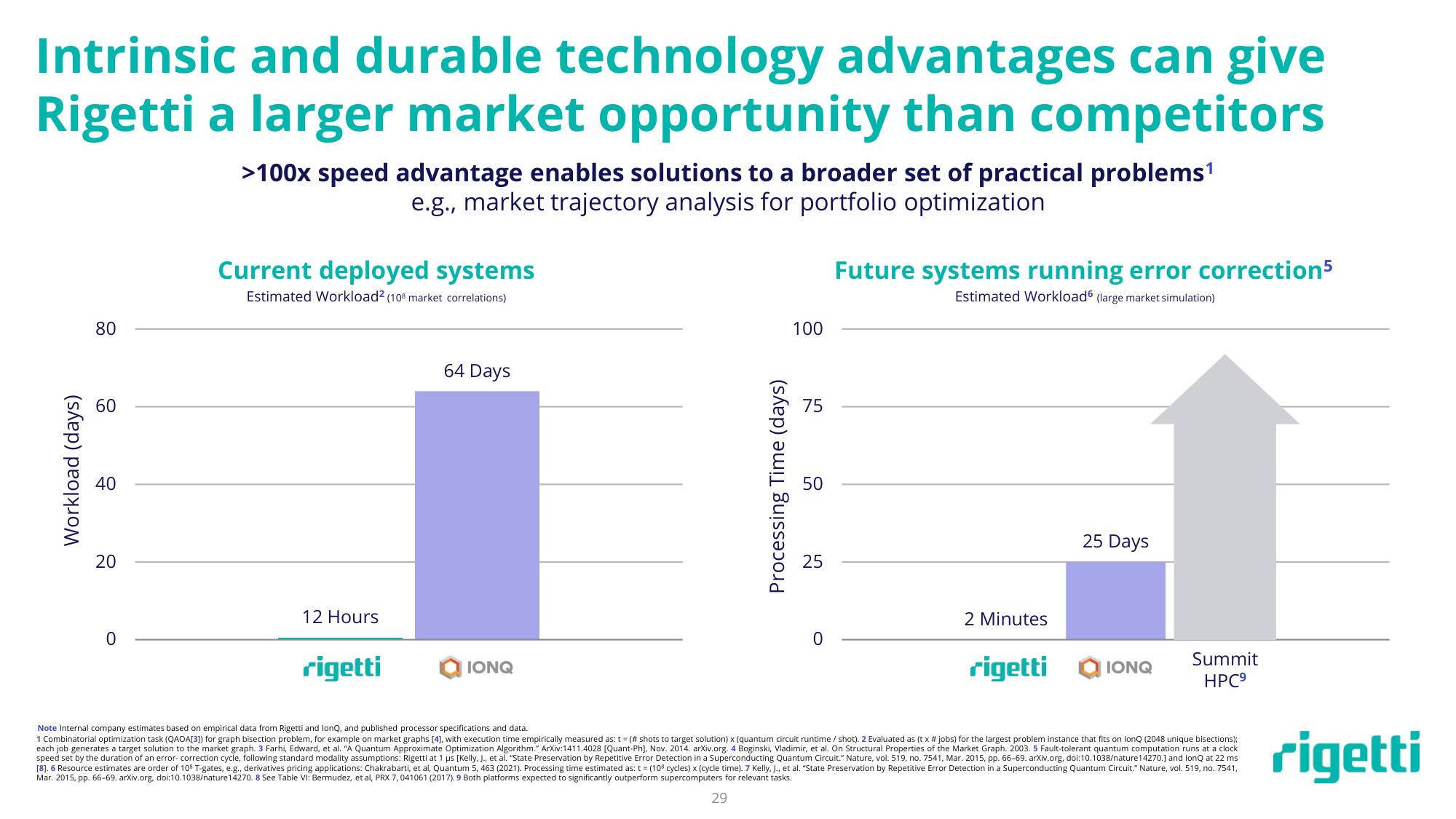Rigetti SPAC Presentation Deck
Intrinsic and durable technology advantages can give
Rigetti a larger market opportunity than competitors
Workload (days)
80
60
40
20
0
>100x speed advantage enables solutions to a broader set of practical problems¹
e.g., market trajectory analysis for portfolio optimization
Current deployed systems
Estimated Workload2 (108 market correlations)
12 Hours
rigetti
64 Days
IONQ
Processing Time (days)
100
75
50
25
0
Future systems running error correction5
Estimated Workload6 (large market simulation)
2 Minutes
rigetti
25 Days
IONQ
Summit
HPC⁹
Note Internal company estimates based on empirical data from Rigetti and lonQ, and published processor specifications and data.
1 Combinatorial optimization task (QAOA[3]) for graph bisection problem, for example on market graphs [4], with execution time empirically measured as: t = (# shots to target solution) x (quantum circuit runtime / shot). 2 Evaluated as (t x # jobs) for the largest problem instance that fits on lonQ (2048 unique bisections);
each job generates a target solution to the market graph. 3 Farhi, Edward, et al. "A Quantum Approximate Optimization Algorithm." ArXiv:1411.4028 [Quant-Ph], Nov. 2014. arXiv.org. 4 Boginski, Vladimir, et al. On Structural Properties of the Market Graph. 2003. 5 Fault-tolerant quantum computation runs at a clock
speed set by the duration of an error-correction cycle, following standard modality assumptions: Rigetti at 1 us [Kelly, J., et al. "State Preservation by Repetitive Error Detection in a Superconducting Quantum Circuit." Nature, vol. 519, no. 7541, Mar. 2015, pp. 66-69. arXiv.org, doi:10.1038/nature14270.] and lonQ at 22 ms
[8]. 6 Resource estimates are order of 108 T-gates, e.g., derivatives pricing applications: Chakrabarti, et al, Quantum 5, 463 (2021). Processing time estimated as: t = (108 cycles) x (cycle time). 7 Kelly, J., et al. "State Preservation by Repetitive Error Detection in a Superconducting Quantum Circuit." Nature, vol. 519, no. 7541,
Mar. 2015, pp. 66-69. arXiv.org, doi:10.1038/nature14270. 8 See Table VI: Bermudez, et al, PRX 7, 041061 (2017). 9 Both platforms expected to significantly outperform supercomputers for relevant tasks.
29
rigettiView entire presentation